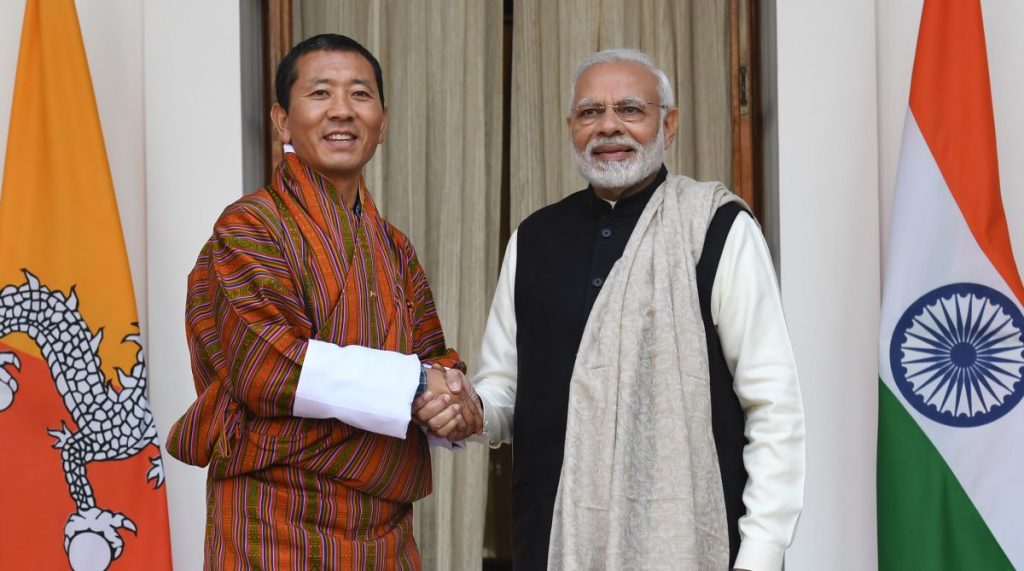Lok Sabha Election 2024, Phase 1: Voting on 102 seats underway
In the first phase of Lok Sabha elections 2024, as many as 102 constituencies spanning across 21 states and Union Territories will elect their new MPs.
The critical upshot of Mr Tshering’s meeting with Mr Modi is that India will contribute Rs 4500 crore to Bhutan’s 12th five-year plan (2018 to 2023)

Bhutan Prime Minister Lotay Tshering with Indian PM Narendra Modi. (Photo: AFP)
The Himalayan kingdom of Bhutan’s graduation in 2007 from an Indian protectorate to a constitutional monarchy has happily translated into a more substantive equation between Thimpu and Delhi. As much is the fineprint of the new Bhutan Prime Minister, Lotay Tshering’s visit to India, and most particularly the summit with Narendra Modi on Friday. On closer reflection, Bhutan has been India’s singularly steadfast friend in South Asia, not to forget occasional hiccups like Delhi’s decision to suspend LPG supplies some years ago and during the Congress-led UPA regime.
Ergo, the government in Thimpu richly deserves a free hand in the conduct of foreign and domestic policy, even the conduct of elections, and within the ambit of close bilateral relations. Mr Tshering’s visit , indeed his first port of call since taking over as Prime Minister in November, is significant not the least because of its profound economic import, bereft of the customary platitudes on stronger ties within SAARC. No less does it signify the importance Bhutan attaches to its dealings with India, the ground for the summit having been paved by the Foreign Secretary, Madhav Gokhale’s visit to Bhutan. The critical upshot of Mr Tshering’s meeting with Mr Modi is that India will contribute Rs 4500 crore to Bhutan’s 12th five-year plan (2018 to 2023). On the strength of this pump-priming, the two countries will, therefore, be partners together in economic growth and development, indeed a case-study for SAARC countries in terms of bilateral cooperation. India and Bhutan have shown the way. Mr Modi has assured his counterpart that India would, as always, play the role of a trusted partner and friend in the development of Bhutan.
Notably, the plan assistance will conform to the needs and priorities of the neighbouring country, whose border straddles North Bengal and Nepal, the second a corridor for anti-monarchist militants. Altogether, this is testament to the forward movement in bilateral ties, exemplified with Bhutan’s support to India in the wake of the stand-off with China over Doklam in June 2017. This is in refreshing contrast to the other neighbour, Nepal, playing the China card for relief ~ in preference to India ~ in the aftermath of the devastating earthquake. Collaboration ought to be the thread, rather than an overbearing attitude on the part of India.
Advertisement
Hydro projects have been an important aspect of bilateral cooperation. Towards that end, work on the Mangghe-Descchu project is scheduled to be completed soon. In yet another forward movement, the tariff relating to this project has also been agreed upon during Friday’s summit. Prime Minister Modi had conveyed a pregnant message last month as the first head of government to congratulate Mr Tshering on his electoral victory. His visit assumes importance as India and Bhutan are celebrating the golden jubilee of bilateral ties.
Advertisement